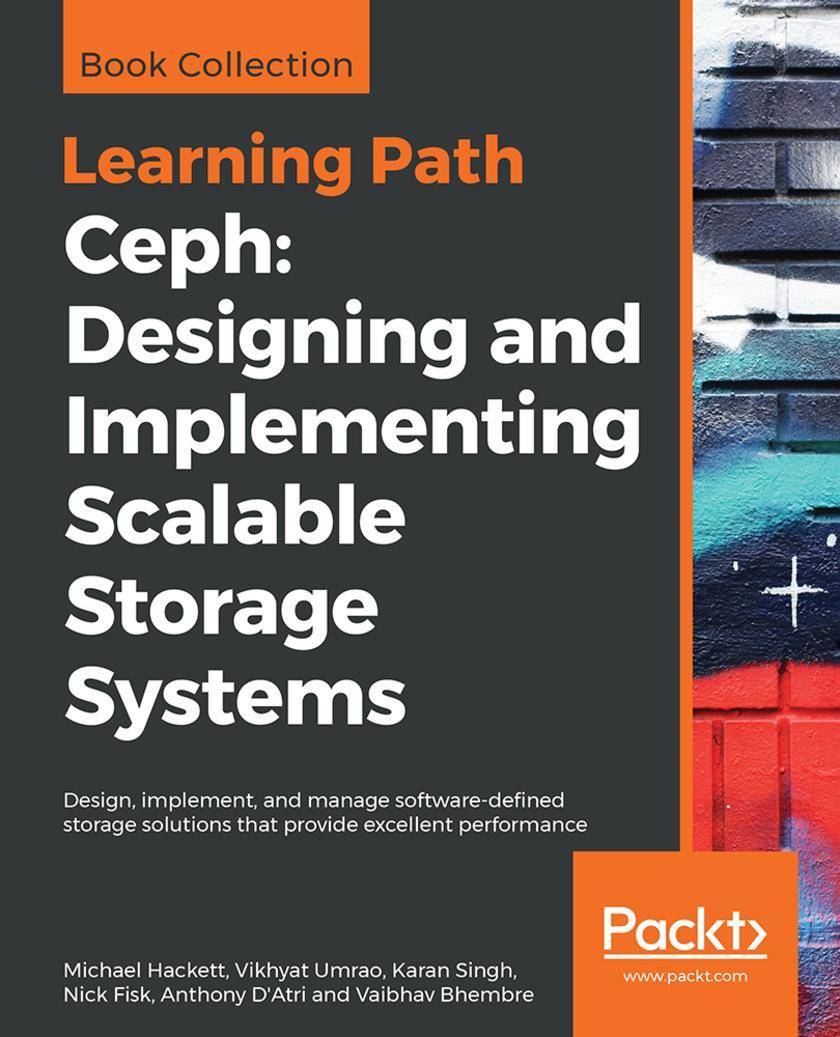
Ceph: Designing and Implementing Scalable Storage Systems
¥90.46
Get to grips with the unified, highly scalable distributed storage system and learn how to design and implement it. Key Features * Explore Ceph's architecture in detail * Implement a Ceph cluster successfully and gain deep insights into its best practices * Leverage the advanced features of Ceph, including erasure coding, tiering, and BlueStore Book Description This Learning Path takes you through the basics of Ceph all the way to gaining in-depth understanding of its advanced features. You’ll gather skills to plan, deploy, and manage your Ceph cluster. After an introduction to the Ceph architecture and its core projects, you’ll be able to set up a Ceph cluster and learn how to monitor its health, improve its performance, and troubleshoot any issues. By following the step-by-step approach of this Learning Path, you’ll learn how Ceph integrates with OpenStack, Glance, Manila, Swift, and Cinder. With knowledge of federated architecture and CephFS, you’ll use Calamari and VSM to monitor the Ceph environment. In the upcoming chapters, you’ll study the key areas of Ceph, including BlueStore, erasure coding, and cache tiering. More specifically, you’ll discover what they can do for your storage system. In the concluding chapters, you will develop applications that use Librados and distributed computations with shared object classes, and see how Ceph and its supporting infrastructure can be optimized. By the end of this Learning Path, you'll have the practical knowledge of operating Ceph in a production environment. This Learning Path includes content from the following Packt products: * Ceph Cookbook by Michael Hackett, Vikhyat Umrao and Karan Singh * Mastering Ceph by Nick Fisk * Learning Ceph, Second Edition by Anthony D'Atri, Vaibhav Bhembre and Karan Singh What you will learn * Understand the benefits of using Ceph as a storage solution * Combine Ceph with OpenStack, Cinder, Glance, and Nova components * Set up a test cluster with Ansible and virtual machine with VirtualBox * Develop solutions with Librados and shared object classes * Configure BlueStore and see its interaction with other configurations * Tune, monitor, and recover storage systems effectively * Build an erasure-coded pool by selecting intelligent parameters Who this book is for If you are a developer, system administrator, storage professional, or cloud engineer who wants to understand how to deploy a Ceph cluster, this Learning Path is ideal for you. It will help you discover ways in which Ceph features can solve your data storage problems. Basic knowledge of storage systems and GNU/Linux will be beneficial.
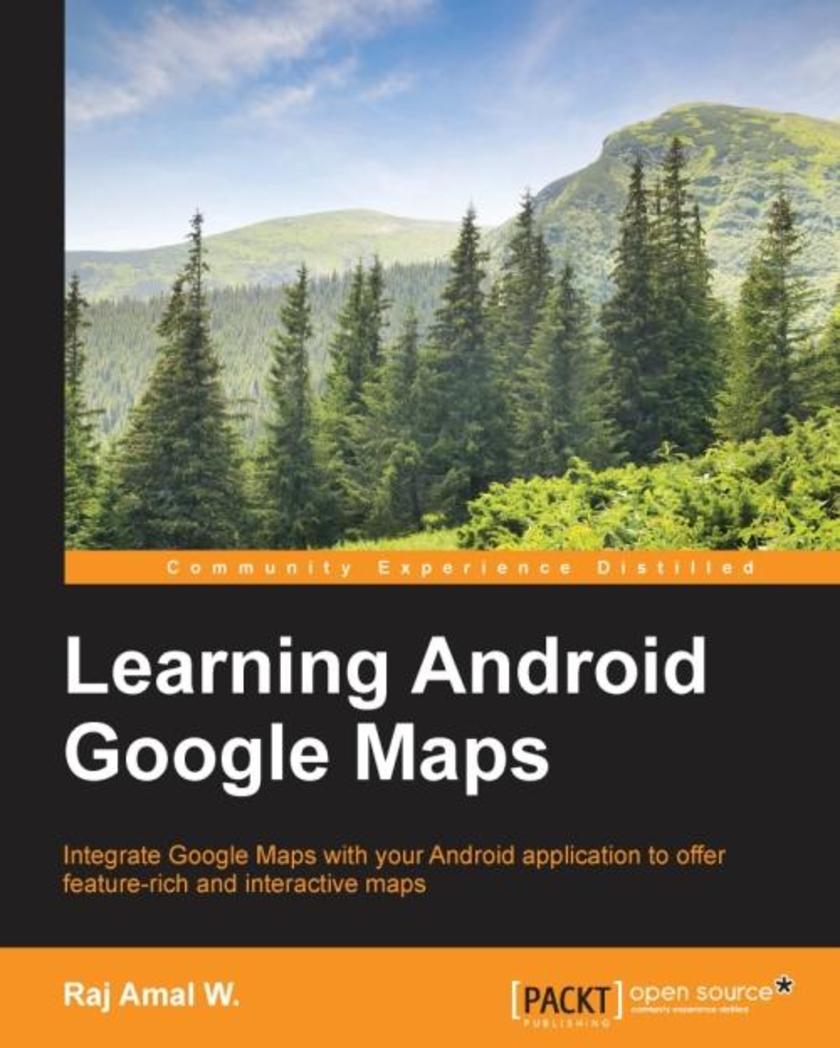
Learning Android Google Maps
¥90.46
Integrate Google Maps with your Android application to offer feature-rich and interactive maps About This Book Set up the development environment and obtain the Google API key to create your first map application Create a cutting edge Google maps application by implementing all the concepts learned A step-by-step tutorial guide that is full of pragmatic examples Who This Book Is For If you are an Android developer and want to integrate maps into your application, then this book is definitely for you. This book is intended for novice Android application developers who would like to get up and running with map rich applications using Google Maps. Some basic development experience would be helpful but it's not a mandate. What You Will Learn Get to know about the basic development environment setup needed to create a successful map application Generate an SHA1 fingerprint, obtain an API key, and create a basic map application Detect different types of maps and implement them in your application Add information to your map such as markers, overlays, information windows, and shapes Explore the interaction with maps and work with gestures Change the different camera views in your map application Work with real-time GPS location data and implementing it in your application Apply Street View and integrate the StreetViewPanoroma fragment to your application Employ the native Google maps application to solve some of the tasks using intents Create a cutting edge Google maps application by implementing all the concepts learned In Detail This book helps you to overcome the most common problems faced by users and helps you create a successful map application without any hassle. The book starts with a brief de*ion of how to set up an environment and obtain an API key to create your map application. This book will teach you about adding markers, overlays, and information windows to the map in detail. You will then dive deep into customizing various types of maps and working with location data and Google Street view. By the end of this book, you will be able to create succinct map applications in Android using Google maps efficiently. Style and approach The book is tailored for the reader with a fundamental approach to Android Google Maps providing a step-by-step introduction to Android Google Maps. It focuses on simple, easy-to-understand examples that are pragmatic and serve as useful basis for real-world applications. Different topics are approached in a bottom-up fashion, gradually going from the simplest foundations to the most advanced features.
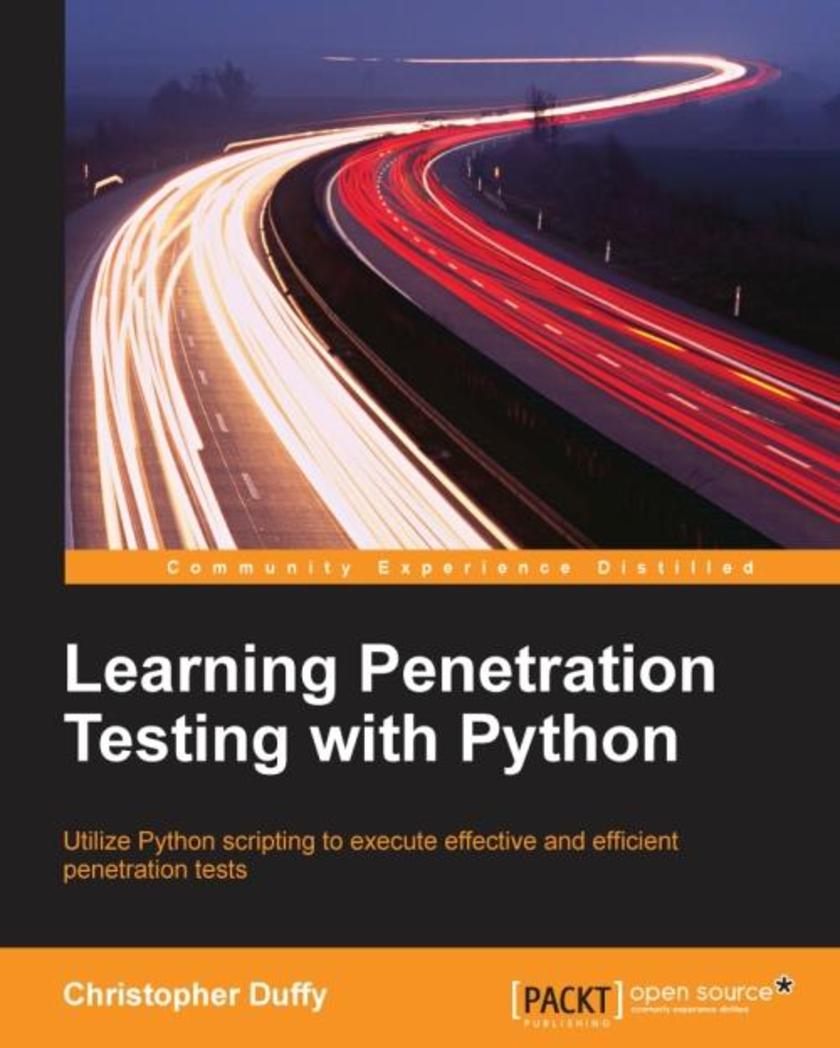
Learning Penetration Testing with Python
¥90.46
Utilize Python *ing to execute effective and efficient penetration tests About This Book Understand how and where Python *s meet the need for penetration testing Familiarise yourself with the process of highlighting a specific methodology to exploit an environment to fetch critical data Develop your Python and penetration testing skills with real-world examples Who This Book Is For If you are a security professional or researcher, with knowledge of different operating systems and a conceptual idea of penetration testing, and you would like to grow your knowledge in Python, then this book is ideal for you. What You Will Learn Familiarise yourself with the generation of Metasploit resource files Use the Metasploit Remote Procedure Call (MSFRPC) to automate exploit generation and execution Use Python’s Scrapy, network, socket, office, Nmap libraries, and custom modules Parse Microsoft Office spreadsheets and eXtensible Markup Language (XML) data files Write buffer overflows and reverse Metasploit modules to expand capabilities Exploit Remote File Inclusion (RFI) to gain administrative access to systems with Python and other *ing languages Crack an organization’s Internet perimeter Chain exploits to gain deeper access to an organization’s resources Interact with web services with Python In Detail Python is a powerful new-age *ing platform that allows you to build exploits, evaluate services, automate, and link solutions with ease. Python is a multi-paradigm programming language well suited to both object-oriented application development as well as functional design patterns. Because of the power and flexibility offered by it, Python has become one of the most popular languages used for penetration testing. This book highlights how you can evaluate an organization methodically and realistically. Specific tradecraft and techniques are covered that show you exactly when and where industry tools can and should be used and when Python fits a need that proprietary and open source solutions do not. Initial methodology, and Python fundamentals are established and then built on. Specific examples are created with vulnerable system images, which are available to the community to test *s, techniques, and exploits. This book walks you through real-world penetration testing challenges and how Python can help. From start to finish, the book takes you through how to create Python *s that meet relative needs that can be adapted to particular situations. As chapters progress, the * examples explain new concepts to enhance your foundational knowledge, culminating with you being able to build multi-threaded security tools, link security tools together, automate reports, create custom exploits, and expand Metasploit modules. Style and approach This book is a practical guide that will help you become better penetration testers and/or Python security tool developers. Each chapter builds on concepts and tradecraft using detailed examples in test environments that you can simulate.
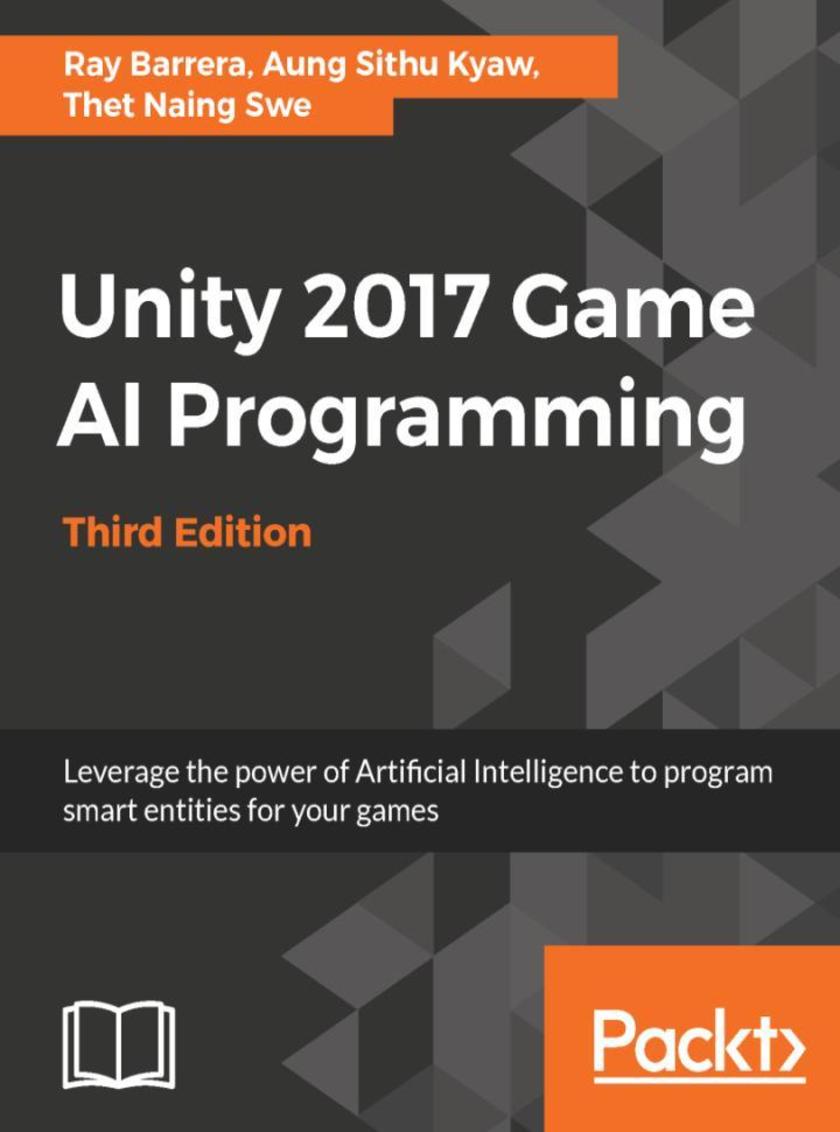
Unity 2017 Game AI Programming - Third Edition
¥90.46
Use Unity 2017 to create fun and unbelievable AI entities in your games with A*, Fuzzy logic and NavMesh About This Book ? Explore the brand-new Unity 2017 features that makes implementing Artificial Intelligence in your game easier than ever ? Use fuzzy logic concepts in your AI decision-making to make your characters more engaging ? Build exciting and richer games by mastering advanced Artificial Intelligence concepts such as Neural Networks Who This Book Is For This book is intended for Unity developers with a basic understanding of C# and the Unity editor. Whether you're looking to build your first game or are looking to expand your knowledge as a game programmer, you will find plenty of exciting information and examples of game AI in terms of concepts and implementation. What You Will Learn ? Understand the basic terminology and concepts in game AI ? Explore advanced AI Concepts such as Neural Networks ? Implement a basic finite state machine using state machine behaviors in Unity 2017 ? Create sensory systems for your AI and couple it with a Finite State Machine ? Wok with Unity 2017's built-in NavMesh features in your game ? Build believable and highly-efficient artificial flocks and crowds ? Create a basic behavior tree to drive a character's actions In Detail Unity 2017 provides game and app developers with a variety of tools to implement Artificial Intelligence. Leveraging these tools via Unity's API or built-in features allows limitless possibilities when it comes to creating your game's worlds and characters. This third edition with Unity will help you break down Artificial Intelligence into simple concepts to give you a fundamental understanding of the topic to build upon. Using a variety of examples, the book then takes those concepts and walks you through actual implementations designed to highlight key concepts, and features related to game AI in Unity 5. Further on you will learn to distinguish the state machine pattern and implement one of your own. This is followed by learning how to implement a basic sensory system for your AI agent and coupling it with a Finite State Machine (FSM). Next you'll learn how to use Unity's built-in NavMesh feature and implement your own A* pathfinding system. You will then learn how to implement simple flocks and crowd's dynamics, key AI concepts. Moving on, you will learn how to implement a behavior tree through a game-focused example. Lastly, you'll combine fuzzy logic concepts with state machines and apply all the concepts in the book to build a simple tank game. Style and approach A self-explanatory practical guide with a series of tips and tricks on creating AI games with ease.
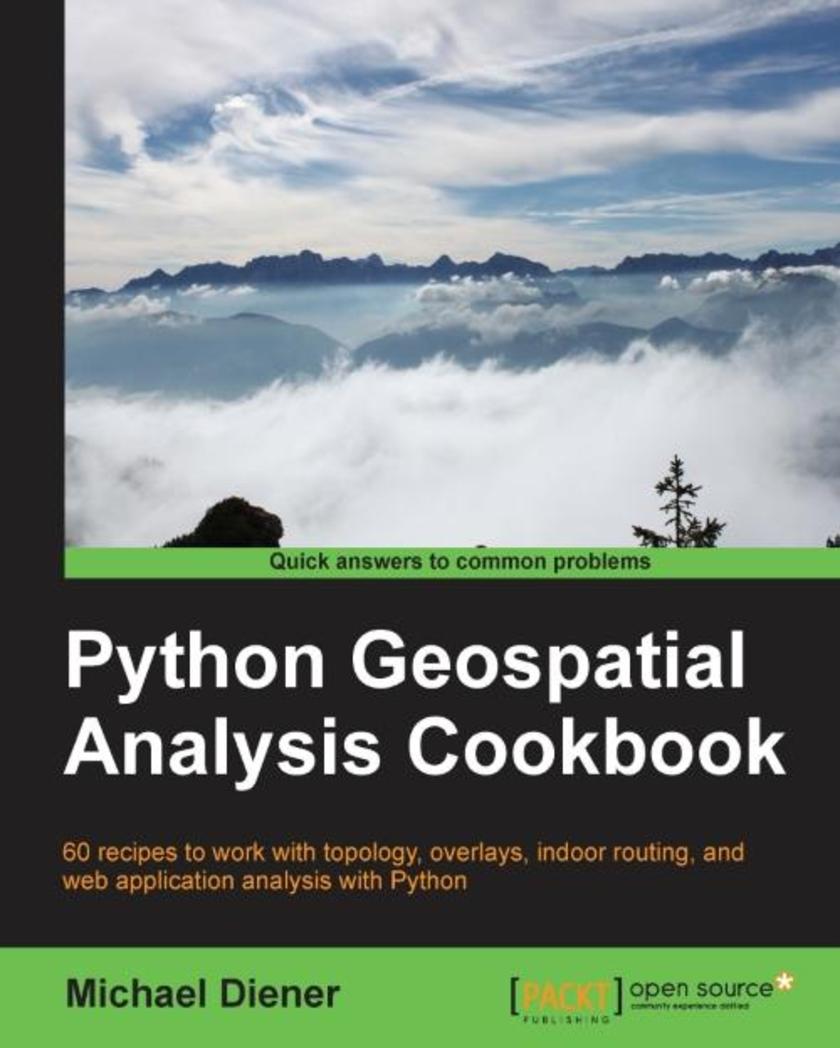
Python Geospatial Analysis Cookbook
¥90.46
Over 60 recipes to work with topology, overlays, indoor routing, and web application analysis with Python About This Book Explore the practical process of using geospatial analysis to solve simple to complex problems with reusable recipes Concise step-by-step instructions to teach you about projections, vector, raster, overlay, indoor routing and topology analysis Create a basic indoor routing application with geodjango Who This Book Is For If you are a student, teacher, programmer, geospatial or IT administrator, GIS analyst, researcher, or scientist looking to do spatial analysis, then this book is for you. Anyone trying to answer simple to complex spatial analysis questions will get a working demonstration of the power of Python with real-world data. Some of you may be beginners with GIS, but most of you will probably have a basic understanding of geospatial analysis and programming. What You Will Learn Discover the projection and coordinate system information of your data and learn how to transform that data into different projections Import or export your data into different data formats to prepare it for your application or spatial analysis Use the power of PostGIS with Python to take advantage of the powerful analysis functions Execute spatial analysis functions on vector data including clipping, spatial joins, measuring distances, areas, and combining data to new results Create your own set of topology rules to perform and ensure quality assurance rules in Python Find the shortest indoor path with network analysis functions in easy, extensible recipes revolving around all kinds of network analysis problems Visualize your data on a map using the visualization tools and methods available to create visually stunning results Build an indoor routing web application with GeoDjango to include your spatial analysis tools built from the previous recipes In Detail Geospatial development links your data to places on the Earth’s surface. Its analysis is used in almost every industry to answer location type questions. Combined with the power of the Python programming language, which is becoming the de facto spatial *ing choice for developers and analysts worldwide, this technology will help you to solve real-world spatial problems. This book begins by tackling the installation of the necessary software dependencies and libraries needed to perform spatial analysis with Python. From there, the next logical step is to prepare our data for analysis; we will do this by building up our tool box to deal with data preparation, transformations, and projections. Now that our data is ready for analysis, we will tackle the most common analysis methods for vector and raster data. To check or validate our results, we will explore how to use topology checks to ensure top-quality results. This is followed with network routing analysis focused on constructing indoor routes within buildings, over different levels. Finally, we put several recipes together in a GeoDjango web application that demonstrates a working indoor routing spatial analysis application. The round trip will provide you all the pieces you need to accomplish your own spatial analysis application to suit your requirements. Style and approach Easy-to-follow, step-by-step recipes, explaining from start to finish how to accomplish real-world tasks.
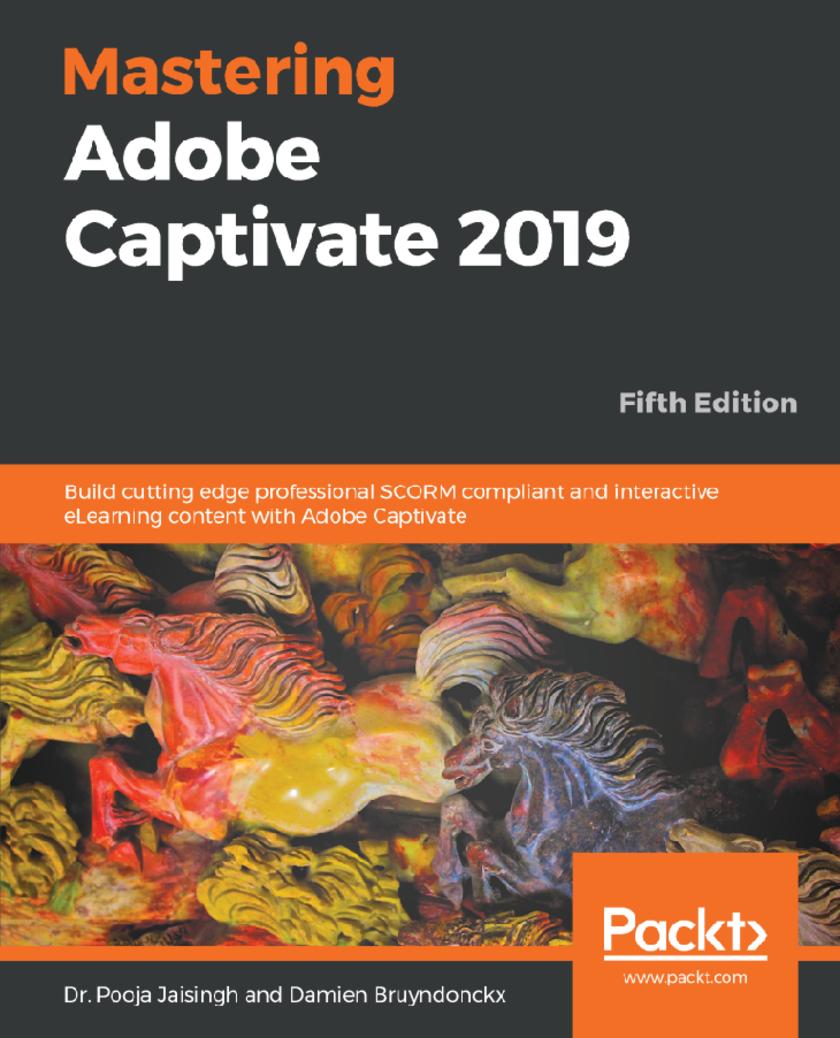
Mastering Adobe Captivate 2019
¥90.46
Create responsive eLearning content, including quizzes, demonstrations, simulations and Virtual Reality projects that fit on any device with Adobe Captivate 2019 Key Features * Build responsive, interactive and highly engaging eLearning content with Adobe Captivate 2019 * Build Virtual Reality eLearning experiences with Adobe Captivate 2019 * Assess your student knowledge with interactive and random quizzes * Seamlessly integrate your eLearning content with any SCORM or xAPI compliant LMS Book Description Adobe Captivate is used to create highly engaging, interactive, and responsive eLearning content. This book takes you through the production of a few pieces of eLearning content, covering all the project types and workflows of Adobe Captivate. First, you will learn how to create a typical interactive Captivate project. This will give you the opportunity to review all Captivate objects and uncover the application's main tools. Then, you will use the built-in capture engine of Captivate to create an interactive software simulation and a Video Demo that can be published as an MP4 video. Then, you will approach the advanced responsive features of Captivate to create a project that can be viewed on any device. And finally, you will immerse your learners in a 360o environment by creating Virtual Reality projects of Adobe Captivate. At the end of the book, you will empower your workflow and projects with the newer and most advanced features of the application, including variables, advanced actions, JavaScript, and using Captivate 2019 with other applications. If you want to produce high quality eLearning content using a wide variety of techniques, implement eLearning in your company, enable eLearning on any device, assess the effectiveness of the learning by using extensive Quizzing features, or are simply interested in eLearning, this book has you covered! What you will learn * Learn how to use the objects in Captivate to build professional eLearning content * Enhance your projects by adding interactivity, animations, and more * Add multimedia elements, such as audio and video, to create engaging learning experiences * Use themes to craft a unique visual experience * Use question slides to create SCORM-compliant quizzes that integrate seamlessly with your LMS * Make your content fit any device with responsive features of Captivate * Create immersive 360° experiences with Virtual Reality projects of Captivate 2019 * Integrate Captivate with other applications (such as PowerPoint and Photoshop) to establish a professional eLearning production workflow * Publish your project in a wide variety of formats including HTML5 and Flash Who this book is for If you are a teacher, instructional designer, eLearning developer, or human resources manager who wants to implement eLearning, then this book is for you. A basic knowledge of your OS is all it takes to create the next generation of responsive eLearning content.
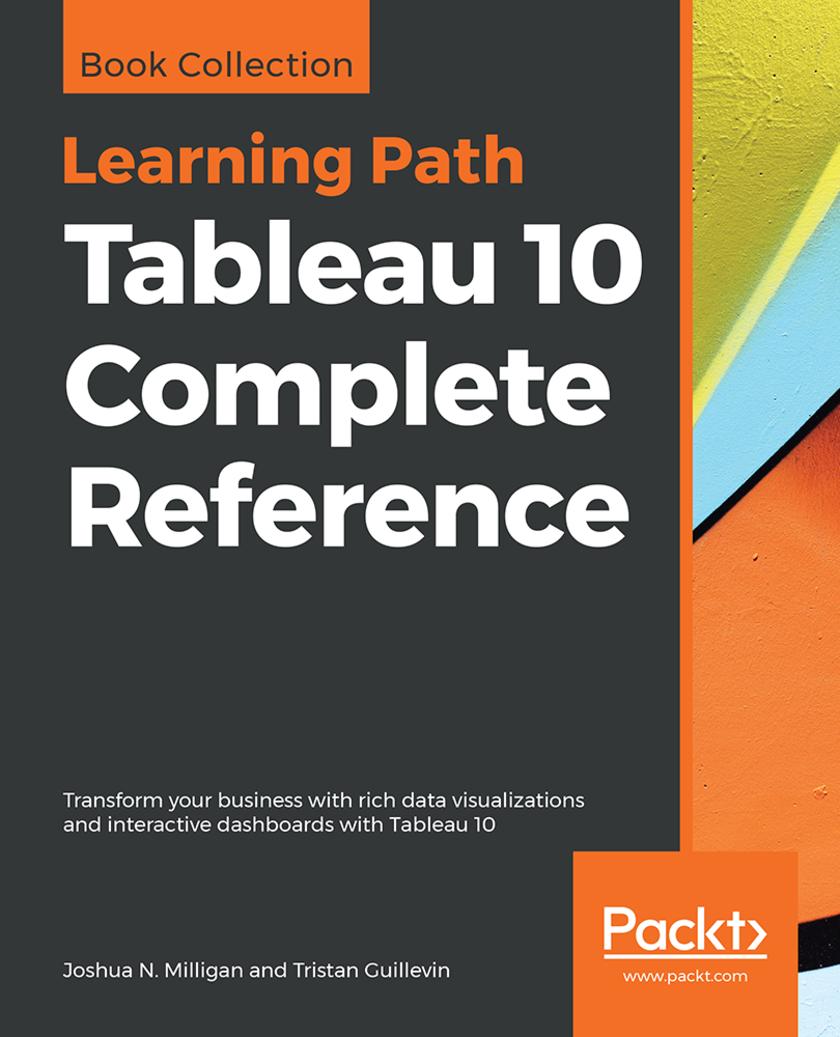
Tableau 10 Complete Reference
¥90.46
Explore and understand data with the powerful data visualization techniques of Tableau, and then communicate insights in powerful ways Key Features *Apply best practices in data visualization and chart types exploration *Explore the latest version of Tableau Desktop with hands-on examples *Understand the fundamentals of Tableau storytelling Book Description Graphical presentation of data enables us to easily understand complex data sets. Tableau 10 Complete Reference provides easy-to-follow recipes with several use cases and real-world business scenarios to get you up and running with Tableau 10. This Learning Path begins with the history of data visualization and its importance in today's businesses. You'll also be introduced to Tableau - how to connect, clean, and analyze data in this visual analytics software. Then, you'll learn how to apply what you've learned by creating some simple calculations in Tableau and using Table Calculations to help drive greater analysis from your data. Next, you'll explore different advanced chart types in Tableau. These chart types require you to have some understanding of the Tableau interface and understand basic calculations. You’ll study in detail all dashboard techniques and best practices. A number of recipes specifically for geospatial visualization, analytics, and data preparation are also covered. Last but not least, you'll learn about the power of storytelling through the creation of interactive dashboards in Tableau. Through this Learning Path, you will gain confidence and competence to analyze and communicate data and insights more efficiently and effectively by creating compelling interactive charts, dashboards, and stories in Tableau. This Learning Path includes content from the following Packt products: *Learning Tableau 10 - Second Edition by N. Milligan *Getting Started with Tableau 2018.x by Tristan Guillevin What you will learn *Build effective visualizations, dashboards, and story points *Build basic to more advanced charts with step-by-step recipes *Become familiar row-level, aggregate, and table calculations *Dig deep into data with clustering and distribution models *Prepare and transform data for analysis *Leverage Tableau’s mapping capabilities to visualize data *Use data storytelling techniques to aid decision making strategy Who this book is for Tableau 10 Complete Reference is designed for anyone who wants to understand their data better and represent it in an effective manner. It is also used for BI professionals and data analysts who want to do better at their jobs.
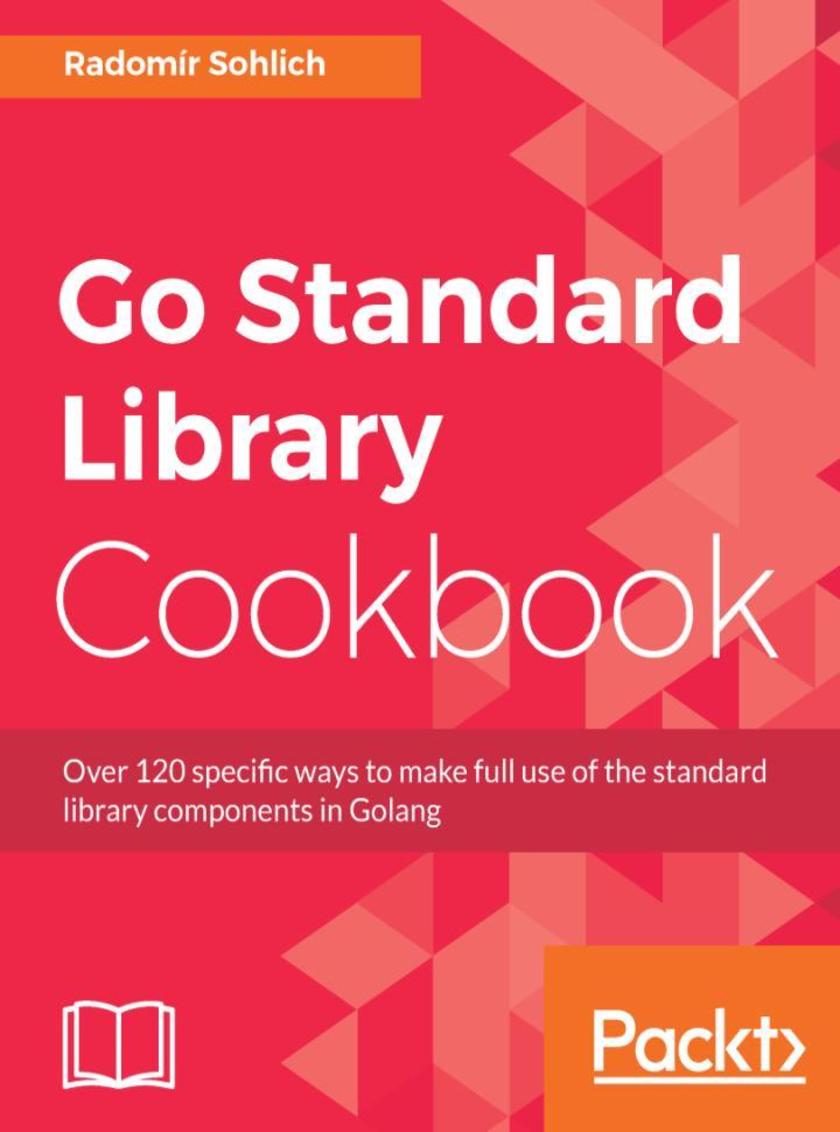
Go Standard Library Cookbook
¥90.46
Implement solutions by leveraging the power of the GO standard library and reducing dependency on external crates About This Book ? Develop high quality, fast and portable applications by leveraging the power of Go Standard Library. ? Practical recipes that will help you work with the standard library algorithms to boost your productivity as a Go developer. ? Compose your own algorithms without forfeiting the simplicity and elegance of the Standard Library. Who This Book Is For This book is for Go developers who would like to explore the power of Golang and learn how to use the Go standard library for various functionalities. The book assumes basic Go programming knowledge. What You Will Learn ? Access environmental variables ? Execute and work with child processes ? Manipulate strings by performing operations such as search, concatenate, and so on ? Parse and format the output of date/time information ? Operate on complex numbers and effective conversions between different number formats and bases ? Work with standard input and output ? Handle filesystem operations and file permissions ? Create TCP and HTTP servers, and access those servers with a client ? Utilize synchronization primitives ? Test your code In Detail Google's Golang will be the next talk of the town, with amazing features and a powerful library. This book will gear you up for using golang by taking you through recipes that will teach you how to leverage the standard library to implement a particular solution. This will enable Go developers to take advantage of using a rock-solid standard library instead of third-party frameworks. The book begins by exploring the functionalities available for interaction between the environment and the operating system. We will explore common string operations, date/time manipulations, and numerical problems. We'll then move on to working with the database, accessing the filesystem, and performing I/O operations. From a networking perspective, we will touch on client and server-side solutions. The basics of concurrency are also covered, before we wrap up with a few tips and tricks. By the end of the book, you will have a good overview of the features of the Golang standard library and what you can achieve with them. Ultimately, you will be proficient in implementing solutions with powerful standard libraries. Style and approach Solution based approach showcasing the power of Go standard library for easy practical implementations.
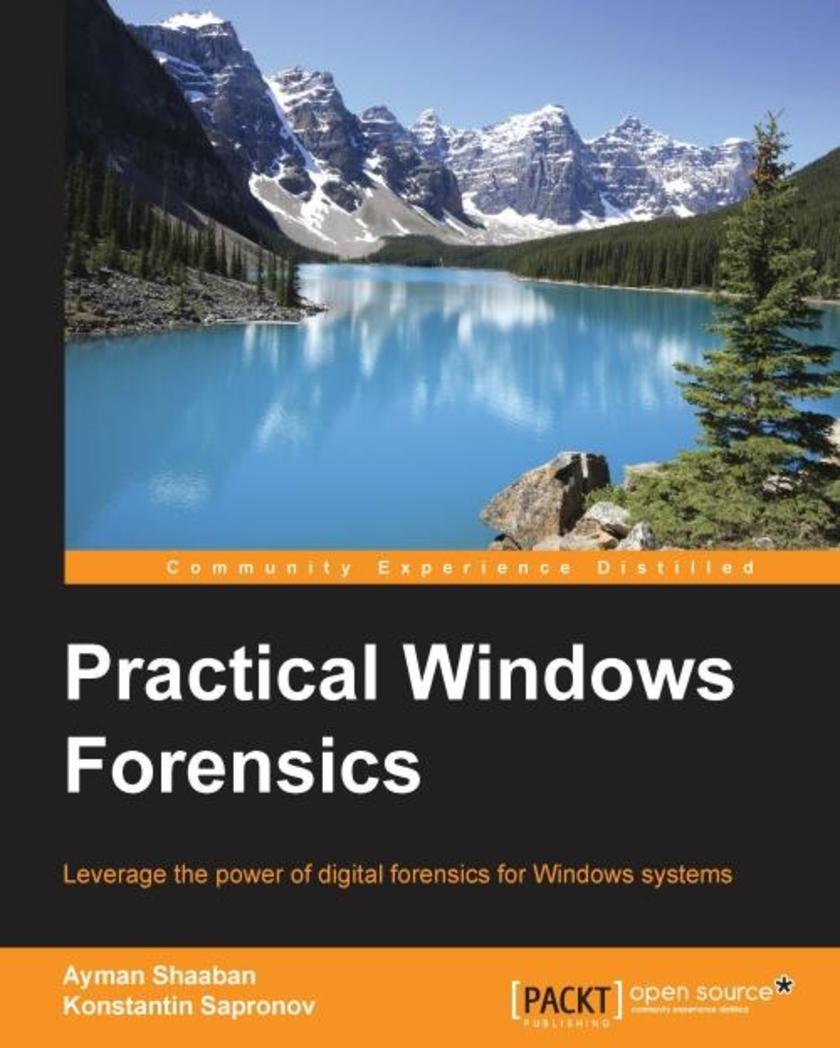
Practical Windows Forensics
¥90.46
Leverage the power of digital forensics for Windows systems About This Book Build your own lab environment to analyze forensic data and practice techniques. This book offers meticulous coverage with an example-driven approach and helps you build the key skills of performing forensics on Windows-based systems using digital artifacts. It uses specific open source and Linux-based tools so you can become proficient at analyzing forensic data and upgrade your existing knowledge. Who This Book Is For This book targets forensic analysts and professionals who would like to develop skills in digital forensic analysis for the Windows platform. You will acquire proficiency, knowledge, and core skills to undertake forensic analysis of digital data. Prior experience of information security and forensic analysis would be helpful. You will gain knowledge and an understanding of performing forensic analysis with tools especially built for the Windows platform. What You Will Learn Perform live analysis on victim or suspect Windows systems locally or remotely Understand the different natures and acquisition techniques of volatile and non-volatile data. Create a timeline of all the system actions to restore the history of an incident. Recover and analyze data from FAT and NTFS file systems. Make use of various tools to perform registry analysis. Track a system user's browser and e-mail activities to prove or refute some hypotheses. Get to know how to dump and analyze computer memory. In Detail Over the last few years, the wave of the cybercrime has risen rapidly. We have witnessed many major attacks on the governmental, military, financial, and media sectors. Tracking all these attacks and crimes requires a deep understanding of operating system operations, how to extract evident data from digital evidence, and the best usage of the digital forensic tools and techniques. Regardless of your level of experience in the field of information security in general, this book will fully introduce you to digital forensics. It will provide you with the knowledge needed to assemble different types of evidence effectively, and walk you through the various stages of the analysis process. We start by discussing the principles of the digital forensics process and move on to show you the approaches that are used to conduct analysis. We will then study various tools to perform live analysis, and go through different techniques to analyze volatile and non-volatile data. Style and approach This is a step-by-step guide that delivers knowledge about different Windows artifacts. Each topic is explained sequentially, including artifact analysis using different tools and techniques. These techniques make use of the evidence extracted from infected machines, and are accompanied by real-life examples.
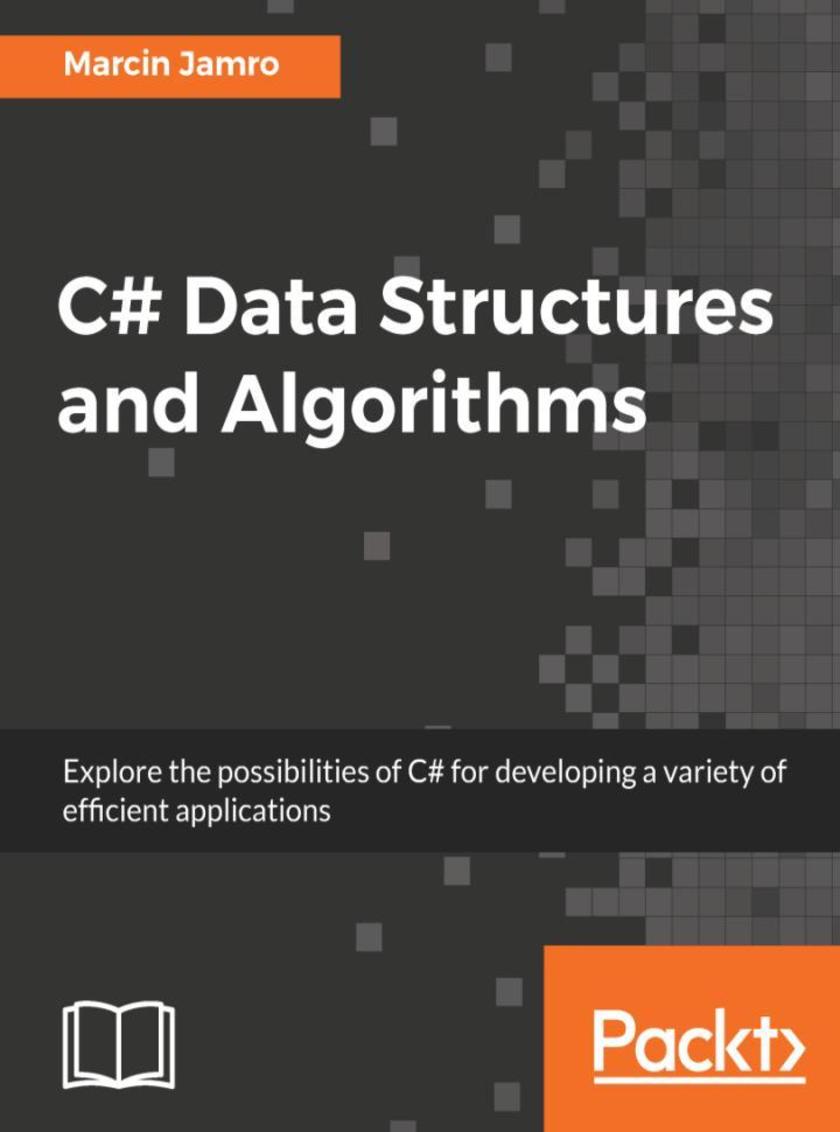
C# Data Structures and Algorithms
¥90.46
A complete guide on using data structures and algorithms to write sophisticated C# code About This Book ? Master array, set and map with trees and graphs, among other fundamental data structures ? Delve into effective design and implementation techniques to meet your software requirements ? Explore illustrations to present data structures and algorithms, as well as their analysis in a clear, visual manner. Who This Book Is For This book is for developers who would like to learn the Data Structures and Algorithms in C#. Basic C# programming knowledge would be an added advantage. What You Will Learn ? How to use arrays and lists to get better results in complex scenarios ? Implement algorithms like the Tower of Hanoi on stacks of C# objects ? Build enhanced applications by using hashtables, dictionaries and sets ? Make a positive impact on efficiency of applications with tree traversal ? Effectively find the shortest path in the graph In Detail Data structures allow organizing data efficiently. They are critical to various problems and their suitable implementation can provide a complete solution that acts like reusable code. In this book, you will learn how to use various data structures while developing in the C# language as well as how to implement some of the most common algorithms used with such data structures. At the beginning, you will get to know arrays, lists, dictionaries, and sets together with real-world examples of your application. Then, you will learn how to create and use stacks and queues. In the following part of the book, the more complex data structures will be introduced, namely trees and graphs, together with some algorithms for searching the shortest path in a graph. We will also discuss how to organize the code in a manageable, consistent, and extendable way. By the end of the book,you will learn how to build components that are easy to understand, debug, and use in different applications. Style and approach Readers will be taken through all the indispensable data structures and algorithms so they can begin their coding journey in C#. At each step, the book will show how to implement these via examples while also discussing the attributes of each algorithm so readers are capable to make an informed choice.
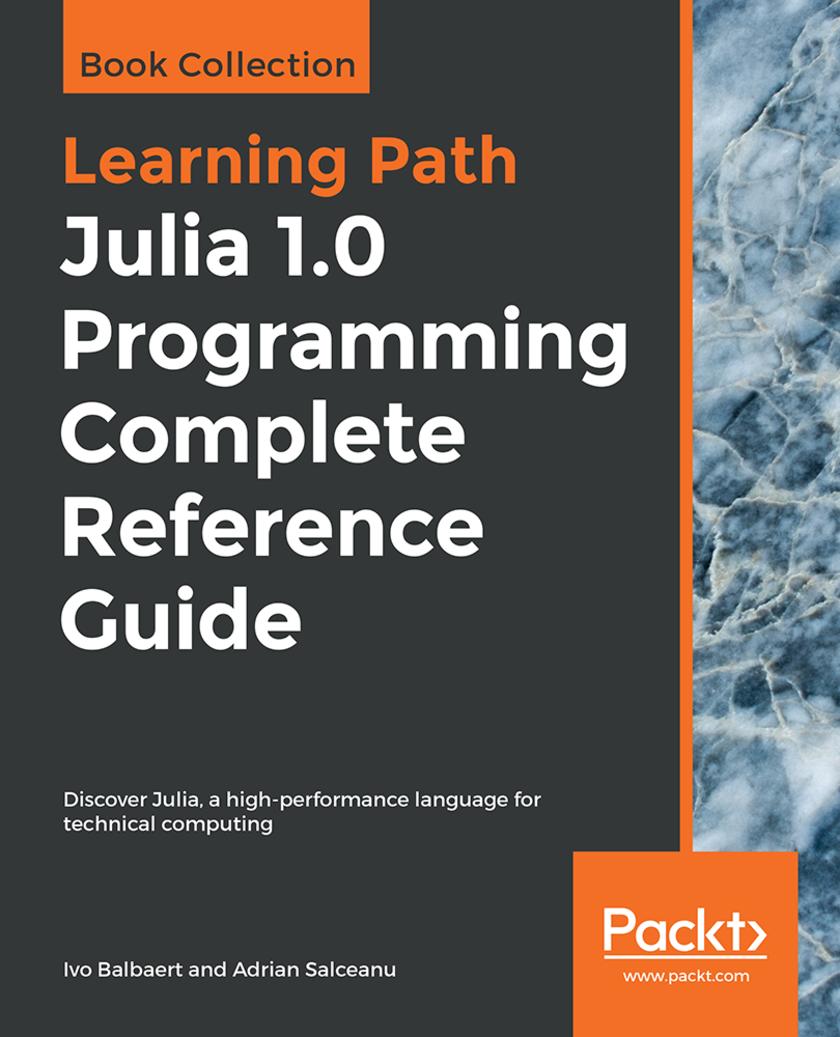
Julia 1.0 Programming Complete Reference Guide
¥88.28
Learn dynamic programming with Julia to build apps for data analysis, visualization, machine learning, and the web Key Features * Leverage Julia's high speed and efficiency to build fast, efficient applications * Perform supervised and unsupervised machine learning and time series analysis * Tackle problems concurrently and in a distributed environment Book Description Julia offers the high productivity and ease of use of Python and R with the lightning-fast speed of C++. There’s never been a better time to learn this language, thanks to its large-scale adoption across a wide range of domains, including fintech, biotech and artificial intelligence (AI). You will begin by learning how to set up a running Julia platform, before exploring its various built-in types. This Learning Path walks you through two important collection types: arrays and matrices. You’ll be taken through how type conversions and promotions work, and in further chapters you'll study how Julia interacts with operating systems and other languages. You’ll also learn about the use of macros, what makes Julia suitable for numerical and scientific computing, and how to run external programs. Once you have grasped the basics, this Learning Path goes on to how to analyze the Iris dataset using DataFrames. While building a web scraper and a web app, you’ll explore the use of functions, methods, and multiple dispatches. In the final chapters, you'll delve into machine learning, where you'll build a book recommender system. By the end of this Learning Path, you’ll be well versed with Julia and have the skills you need to leverage its high speed and efficiency for your applications. This Learning Path includes content from the following Packt products: * Julia 1.0 Programming - Second Edition by Ivo Balbaert * Julia Programming Projects by Adrian Salceanu What you will learn * Create your own types to extend the built-in type system * Visualize your data in Julia with plotting packages * Explore the use of built-in macros for testing and debugging * Integrate Julia with other languages such as C, Python, and MATLAB * Analyze and manipulate datasets using Julia and DataFrames * Develop and run a web app using Julia and the HTTP package * Build a recommendation system using supervised machine learning Who this book is for If you are a statistician or data scientist who wants a quick course in the Julia programming language while building big data applications, this Learning Path is for you. Basic knowledge of mathematics and programming is a must.
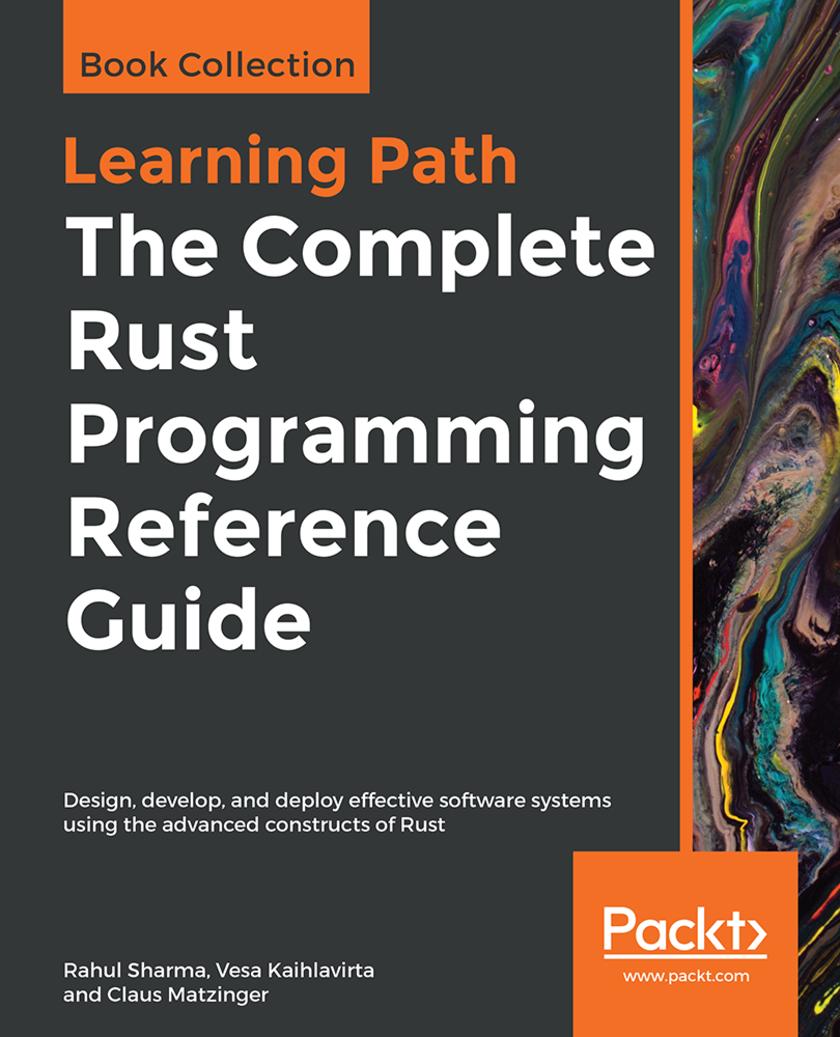
The Complete Rust Programming Reference Guide
¥88.28
Design and implement professional-level programs by leveraging modern data structures and algorithms in Rust Key Features * Improve your productivity by writing more simple and easy code in Rust * Discover the functional and reactive implementations of traditional data structures * Delve into new domains of Rust, including WebAssembly, networking, and command-line tools Book Description Rust is a powerful language with a rare combination of safety, speed, and zero-cost abstractions. This Learning Path is filled with clear and simple explanations of its features along with real-world examples, demonstrating how you can build robust, scalable, and reliable programs. You’ll get started with an introduction to Rust data structures, algorithms, and essential language constructs. Next, you will understand how to store data using linked lists, arrays, stacks, and queues. You’ll also learn to implement sorting and searching algorithms, such as Brute Force algorithms, Greedy algorithms, Dynamic Programming, and Backtracking. As you progress, you’ll pick up on using Rust for systems programming, network programming, and the web. You’ll then move on to discover a variety of techniques, right from writing memory-safe code, to building idiomatic Rust libraries, and even advanced macros. By the end of this Learning Path, you’ll be able to implement Rust for enterprise projects, writing better tests and documentation, designing for performance, and creating idiomatic Rust code. This Learning Path includes content from the following Packt products: * Mastering Rust - Second Edition by Rahul Sharma and Vesa Kaihlavirta * Hands-On Data Structures and Algorithms with Rust by Claus Matzinger What you will learn * Design and implement complex data structures in Rust * Create and use well-tested and reusable components with Rust * Understand the basics of multithreaded programming and advanced algorithm design * Explore application profiling based on benchmarking and testing * Study and apply best practices and strategies in error handling * Create efficient web applications with the Actix-web framework * Use Diesel for type-safe database interactions in your web application Who this book is for If you are already familiar with an imperative language and now want to progress from being a beginner to an intermediate-level Rust programmer, this Learning Path is for you. Developers who are already familiar with Rust and want to delve deeper into the essential data structures and algorithms in Rust will also find this Learning Path useful.
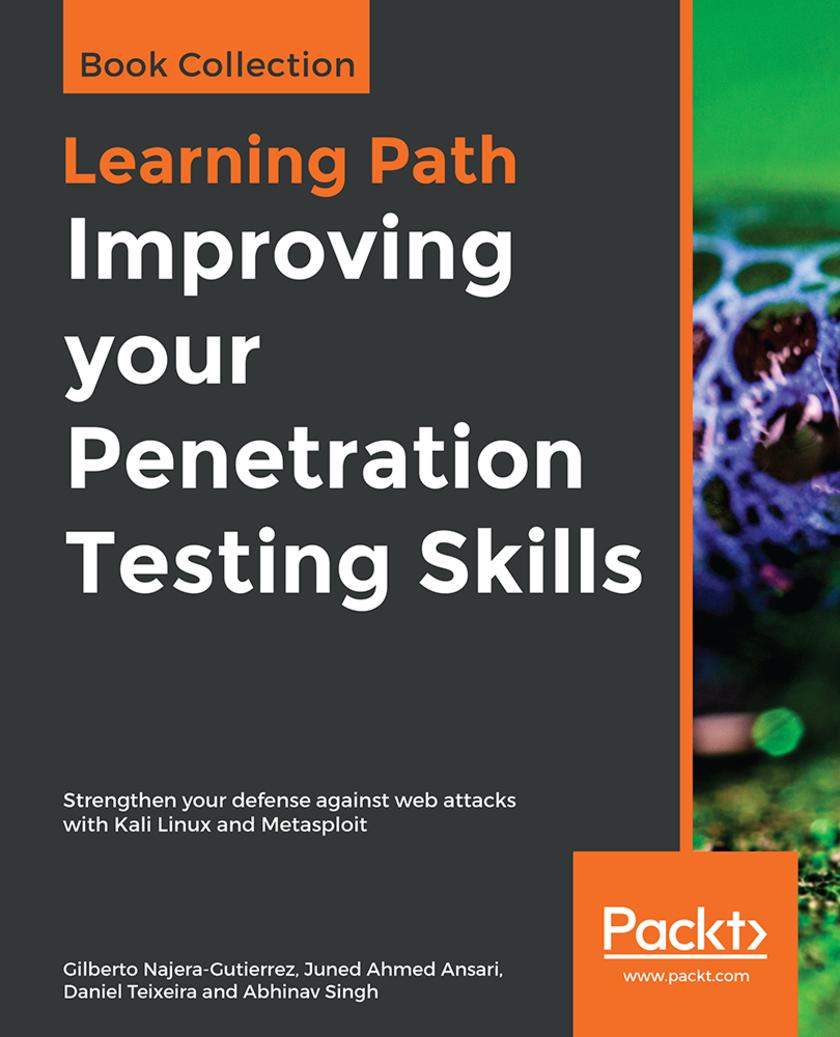
Improving your Penetration Testing Skills
¥88.28
Evade antiviruses and bypass firewalls with the most widely used penetration testing frameworks Key Features * Gain insights into the latest antivirus evasion techniques * Set up a complete pentesting environment using Metasploit and virtual machines * Discover a variety of tools and techniques that can be used with Kali Linux Book Description Penetration testing or ethical hacking is a legal and foolproof way to identify vulnerabilities in your system. With thorough penetration testing, you can secure your system against the majority of threats. This Learning Path starts with an in-depth explanation of what hacking and penetration testing is. You’ll gain a deep understanding of classical SQL and command injection flaws, and discover ways to exploit these flaws to secure your system. You'll also learn how to create and customize payloads to evade antivirus software and bypass an organization's defenses. Whether it’s exploiting server vulnerabilities and attacking client systems, or compromising mobile phones and installing backdoors, this Learning Path will guide you through all this and more to improve your defense against online attacks. By the end of this Learning Path, you'll have the knowledge and skills you need to invade a system and identify all its vulnerabilities. This Learning Path includes content from the following Packt products: * Web Penetration Testing with Kali Linux - Third Edition by Juned Ahmed Ansari and Gilberto Najera-Gutierrez * Metasploit Penetration Testing Cookbook - Third Edition by Abhinav Singh , Monika Agarwal, et al What you will learn * Build and analyze Metasploit modules in Ruby * Integrate Metasploit with other penetration testing tools * Use server-side attacks to detect vulnerabilities in web servers and their applications * Explore automated attacks such as fuzzing web applications * Identify the difference between hacking a web application and network hacking * Deploy Metasploit with the Penetration Testing Execution Standard (PTES) * Use MSFvenom to generate payloads and backdoor files, and create shellcode Who this book is for This Learning Path is designed for security professionals, web programmers, and pentesters who want to learn vulnerability exploitation and make the most of the Metasploit framework. Some understanding of penetration testing and Metasploit is required, but basic system administration skills and the ability to read code are a must.
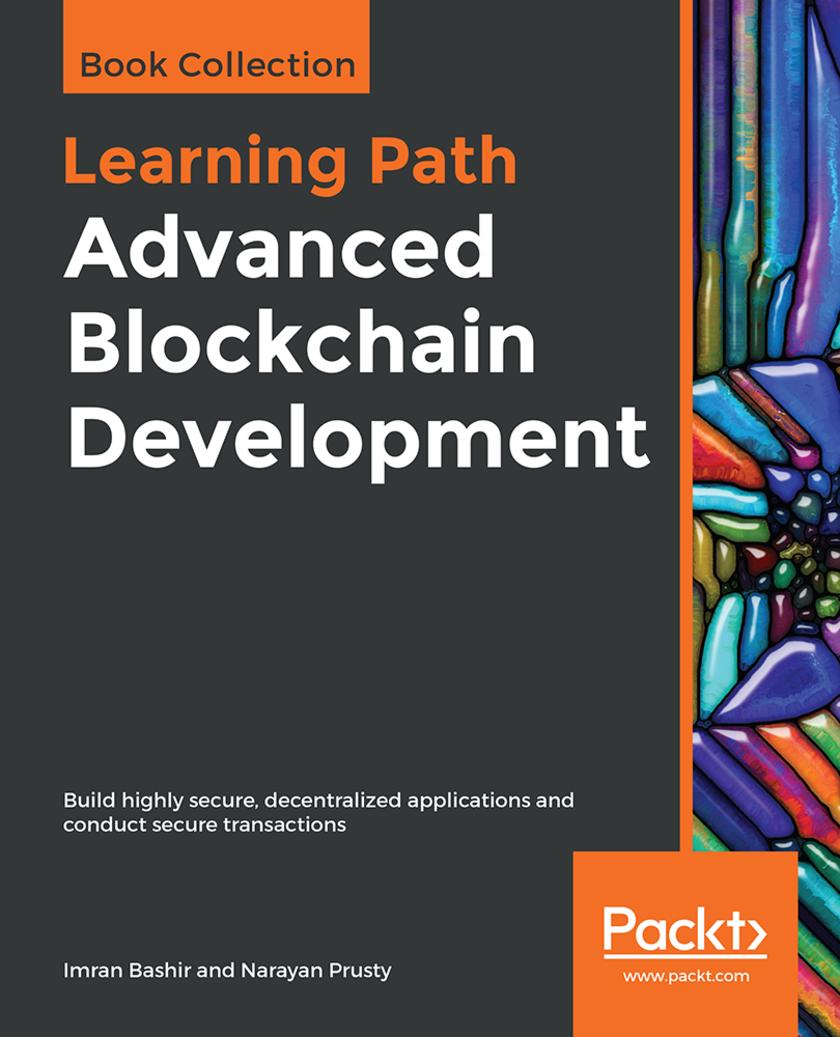
Advanced Blockchain Development
¥88.28
Explore distributed ledger technology, decentralization, and smart contracts and develop real-time decentralized applications with Ethereum and Solidity Key Features * Get to grips with the underlying technical principles and implementations of blockchain * Build powerful applications using Ethereum to secure transactions and create smart contracts * Gain advanced insights into cryptography and cryptocurrencies Book Description Blockchain technology is a distributed ledger with applications in industries such as finance, government, and media. This Learning Path is your guide to building blockchain networks using Ethereum, JavaScript, and Solidity. You will get started by understanding the technical foundations of blockchain technology, including distributed systems, cryptography and how this digital ledger keeps data secure. Further into the chapters, you’ll gain insights into developing applications using Ethereum and Hyperledger. As you build on your knowledge of Ether security, mining , smart contracts, and Solidity, you’ll learn how to create robust and secure applications that run exactly as programmed without being affected by fraud, censorship, or third-party interference. Toward the concluding chapters, you’ll explore how blockchain solutions can be implemented in applications such as IoT apps, in addition to its use in currencies. The Learning Path will also highlight how you can increase blockchain scalability and even discusses the future scope of this fascinating and powerful technology. By the end of this Learning Path, you'll be equipped with the skills you need to tackle pain points encountered in the blockchain life cycle and confidently design and deploy decentralized applications. This Learning Path includes content from the following Packt products: * Mastering Blockchain - Second Edition by Imran Bashir * Building Blockchain Projects by Narayan Prusty What you will learn * Understand why decentralized applications are important * Discover the mechanisms behind bitcoin and alternative cryptocurrencies * Master how cryptography is used to secure data with the help of examples * Maintain, monitor, and manage your blockchain solutions * Create Ethereum wallets * Explore research topics and the future scope of blockchain technology Who this book is for This Learning Path is designed for blockchain developers who want to build decentralized applications and smart contracts from scratch using Hyperledger. Basic familiarity with any programming language will be useful to get started with this Learning Path.
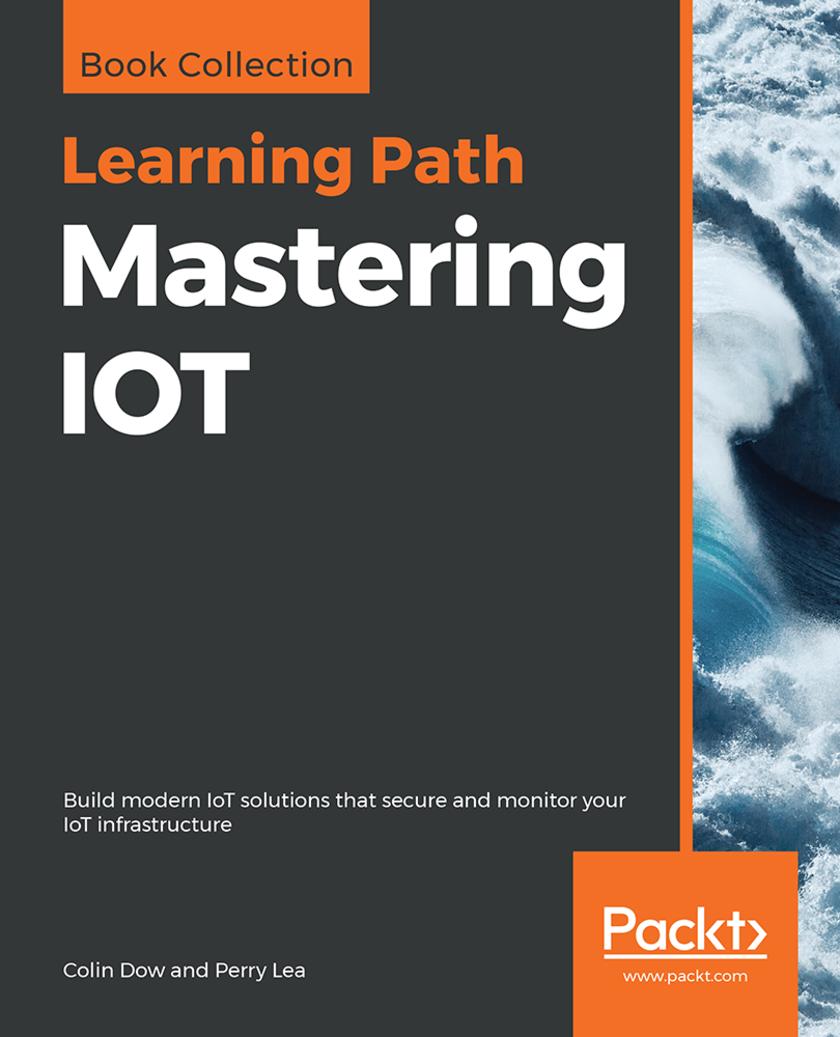
Mastering IOT
¥88.28
Leverage the full potential of IoT with the combination of Raspberry Pi 3 and Python and architect a complete IoT system that is the best fit for your organization Key Features * Build complex Python-based applications with IoT * Explore different concepts, technologies, and tradeoffs in the IoT architectural stack * Delve deep into each element of the IoT design—from sensors to the cloud Book Description The Internet of Things (IoT) is the fastest growing technology market. Industries are embracing IoT technologies to improve operational expenses, product life, and people's well-being. We’ll begin our journey with an introduction to Raspberry Pi and quickly jump right into Python programming. We’ll learn all concepts through multiple projects, and then reinforce our learnings by creating an IoT robot car. We’ll examine modern sensor systems and focus on what their power and functionality can bring to our system. We’ll also gain insight into cloud and fog architectures, including the OpenFog standards. The Learning Path will conclude by discussing three forms of prevalent attacks and ways to improve the security of our IoT infrastructure. By the end of this Learning Path, we will have traversed the entire spectrum of technologies needed to build a successful IoT system, and will have the confidence to build, secure, and monitor our IoT infrastructure. This Learning Path includes content from the following Packt products: * Internet of Things Programming Projects by Colin Dow * Internet of Things for Architects by Perry Lea What you will learn * Build a home security dashboard using an infrared motion detector * Receive data and display it with an actuator connected to the Raspberry Pi * Build an IoT robot car that is controlled via the Internet * Use IP-based communication to easily and quickly scale your system * Explore cloud protocols, such as Message Queue Telemetry Transport (MQTT) and CoAP * Secure communication with encryption forms, such as symmetric key Who this book is for This Learning Path is designed for developers, architects, and system designers who are interested in building exciting projects with Python by understanding the IoT ecosphere, various technologies, and tradeoffs. Technologists and technology managers who want to develop a broad view of IoT architecture, will also find this Learning Path useful. Prior programming knowledge of Python is a must.
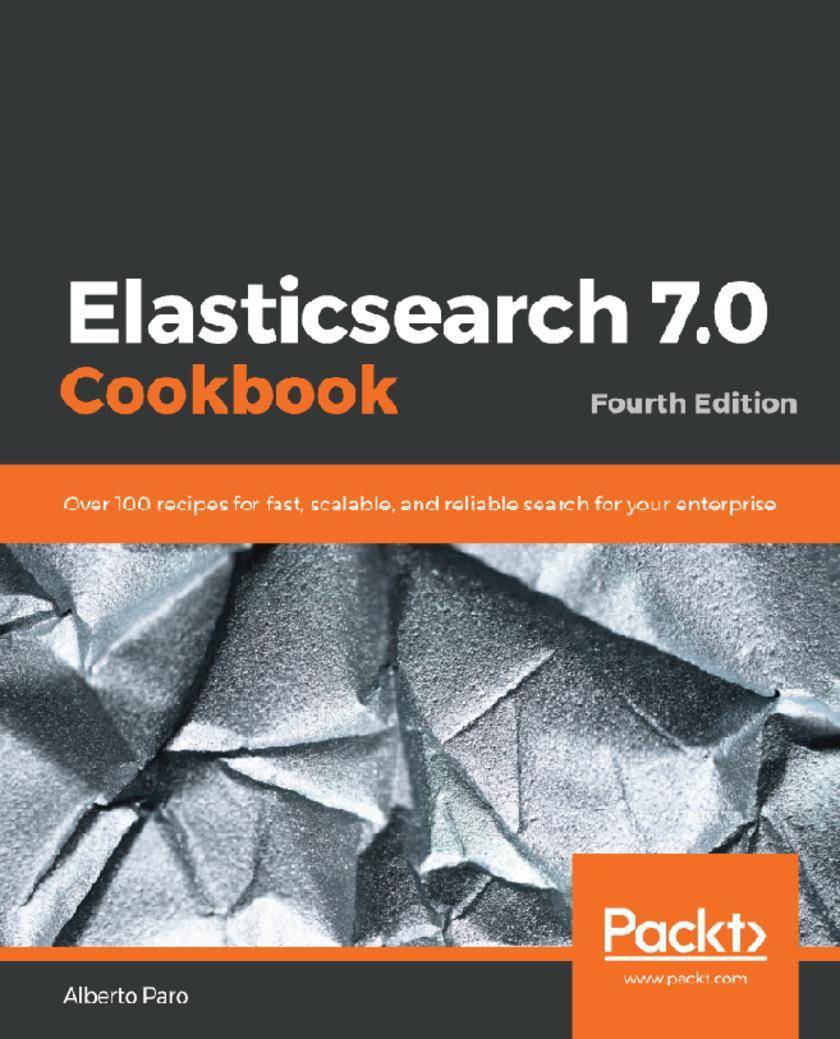
Elasticsearch 7.0 Cookbook
¥88.28
Search, analyze, and manage data effectively with Elasticsearch 7 Key Features * Extend Elasticsearch functionalities and learn how to deploy on Elastic Cloud * Deploy and manage simple Elasticsearch nodes as well as complex cluster topologies * Explore the capabilities of Elasticsearch 7 with easy-to-follow recipes Book Description Elasticsearch is a Lucene-based distributed search server that allows users to index and search unstructured content with petabytes of data. With this book, you'll be guided through comprehensive recipes on what's new in Elasticsearch 7, and see how to create and run complex queries and analytics. Packed with recipes on performing index mapping, aggregation, and scripting using Elasticsearch, this fourth edition of Elasticsearch Cookbook will get you acquainted with numerous solutions and quick techniques for performing both every day and uncommon tasks such as deploying Elasticsearch nodes, integrating other tools to Elasticsearch, and creating different visualizations. You will install Kibana to monitor a cluster and also extend it using a variety of plugins. Finally, you will integrate your Java, Scala, Python, and big data applications such as Apache Spark and Pig with Elasticsearch, and create efficient data applications powered by enhanced functionalities and custom plugins. By the end of this book, you will have gained in-depth knowledge of implementing Elasticsearch architecture, and you'll be able to manage, search, and store data efficiently and effectively using Elasticsearch. What you will learn * Create an efficient architecture with Elasticsearch * Optimize search results by executing analytics aggregations * Build complex queries by managing indices and documents * Monitor the performance of your cluster and nodes * Design advanced mapping to take full control of index steps * Integrate Elasticsearch in Java, Scala, Python, and big data applications * Install Kibana to monitor clusters and extend it for plugins Who this book is for If you’re a software engineer, big data infrastructure engineer, or Elasticsearch developer, you'll find this book useful. This Elasticsearch book will also help data professionals working in the e-commerce and FMCG industry who use Elastic for metrics evaluation and search analytics to get deeper insights for better business decisions. Prior experience with Elasticsearch will help you get the most out of this book.
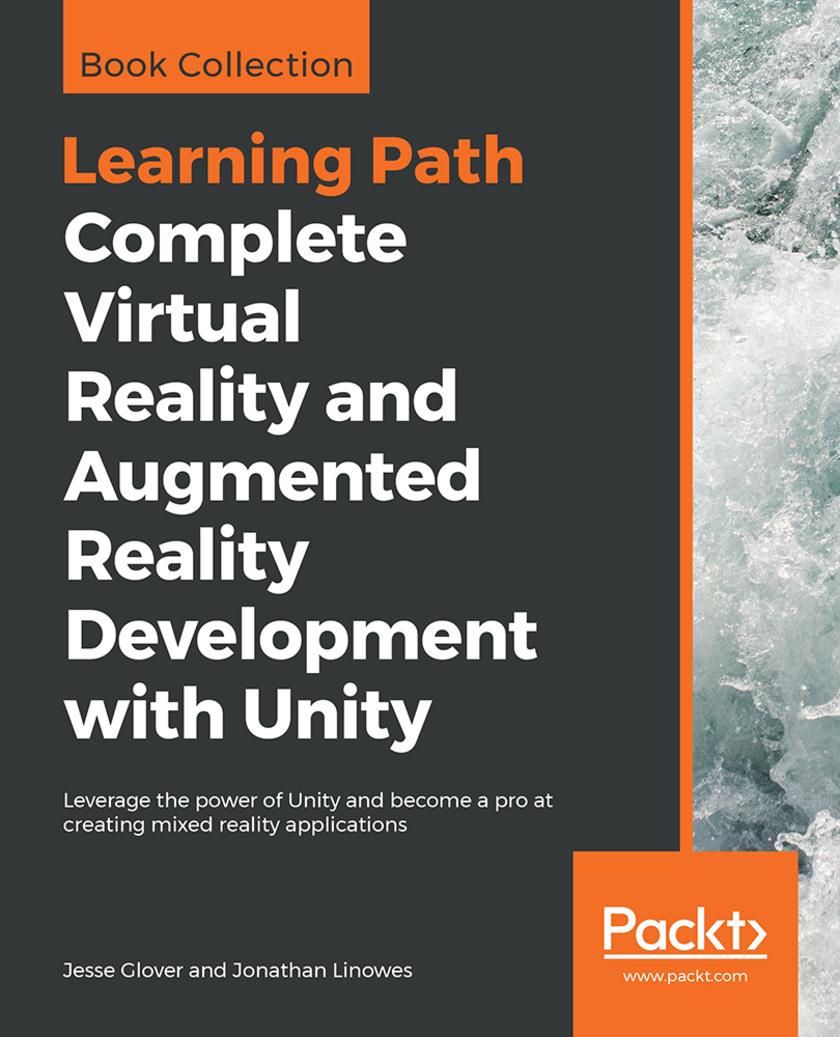
Complete Virtual Reality and Augmented Reality Development with Unity
¥88.28
Get close and comfortable with Unity and build applications that run on HoloLens, Daydream, and Oculus Rift Key Features * Build fun augmented reality applications using ARKit, ARCore, and Vuforia * Explore virtual reality by developing more than 10 engaging projects * Learn how to integrate AR and VR concepts together in a single application Book Description Unity is the leading platform to develop mixed reality experiences because it provides a great pipeline for working with 3D assets. Using a practical and project-based approach, this Learning Path educates you about the specifics of AR and VR development using Unity 2018 and Unity 3D. You’ll learn to integrate, animate, and overlay 3D objects on your camera feed, before moving on to implement sensor-based AR applications. You’ll explore various concepts by creating an AR application using Vuforia for both macOS and Windows for Android and iOS devices. Next, you’ll learn how to develop VR applications that can be experienced with devices, such as Oculus and Vive. You’ll also explore various tools for VR development: gaze-based versus hand controller input, world space UI canvases, locomotion and teleportation, timeline animation, and multiplayer networking. You’ll learn the Unity 3D game engine via the interactive Unity Editor and C# programming. By the end of this Learning Path, you’ll be fully equipped to develop rich, interactive mixed reality experiences using Unity. This Learning Path includes content from the following Packt products: * Unity Virtual Reality Projects - Second Edition by Jonathan Linowes * Unity 2018 Augmented Reality Projects by Jesse Glover What you will learn * Create 3D scenes to learn about world space and scale * Move around your scenes using locomotion and teleportation * Create filters or overlays that work with facial recognition software * Interact with virtual objects using eye gaze, hand controllers, and user input events * Design and build a VR storytelling animation with a soundtrack and timelines * Create social VR experiences with Unity networking Who this book is for If you are a game developer familiar with 3D computer graphics and interested in building your own AR and VR games or applications, then this Learning Path is for you. Any prior experience in Unity and C# will be an advantage. In all, this course teaches you the tools and techniques to develop engaging mixed reality applications.
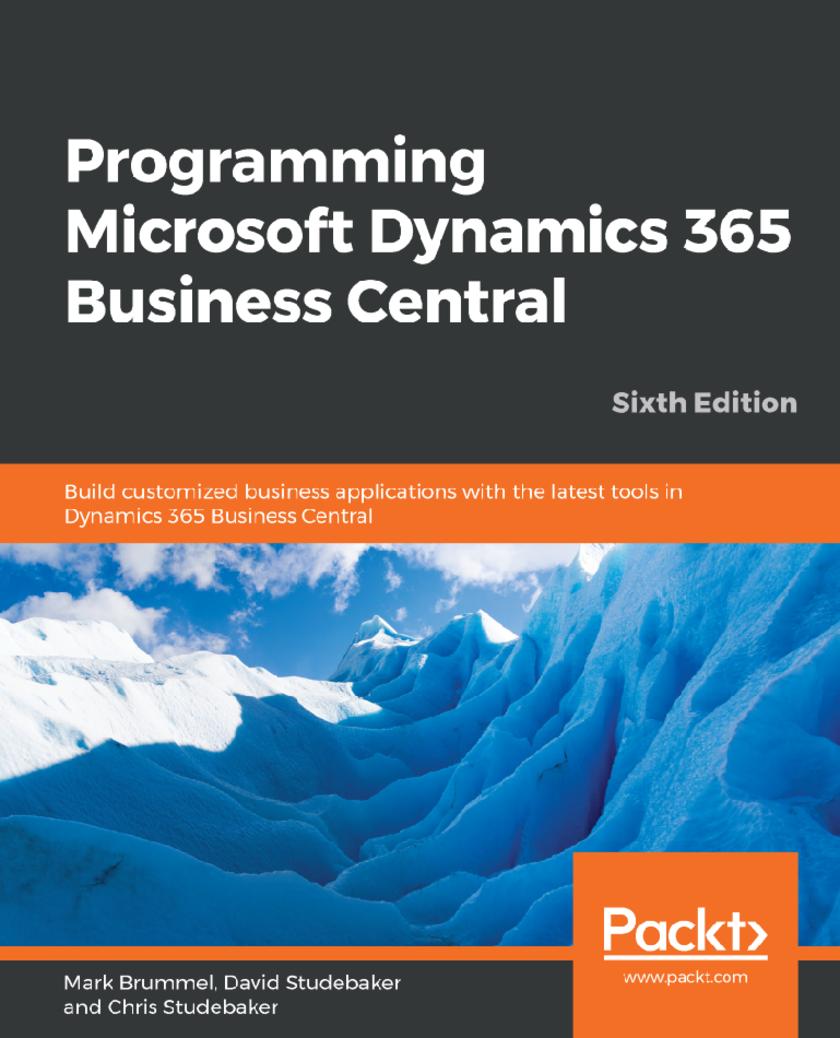
Programming Microsoft Dynamics 365 Business Central
¥88.28
Explore the fundamentals of Dynamics 365 Business Central and the Visual Studio Code development environment with the help of useful examples and case studies Key Features * Tailor your applications to best suit the needs of your business * Explore the latest features of Business Central with examples curated by industry experts * Integrate Business Central features in your applications with this comprehensive guide Book Description Microsoft Dynamics 365 Business Central is a full ERP business solution suite with a robust set of development tools to support customization and enhancement. These tools can be used to tailor Business Central's in-built applications to support complete management functions for finance, supply chain, manufacturing, and operations. Using a case study approach, this book will introduce you to Dynamics 365 Business Central and Visual Studio Code development tools to help you become a productive Business Central developer. You'll also learn how to evaluate a product's development capabilities and manage Business Central-based development and implementation. You'll explore application structure, the construction of and uses for each object type, and how it all fits together to build apps that meet special business requirements. By the end of this book, you'll understand how to design and develop high-quality software using the Visual Studio Code development environment, the AL language paired with the improved editor, patterns, and features. What you will learn * Programming using the AL language in the Visual Studio Code development environment * Explore functional design and development using AL * How to build interactive pages and learn how to extract data for users * How to use best practices to design and develop modifications for new functionality integrated with the standard Business Central software * Become familiar with deploying the broad range of components available in a Business Central system * Create robust, viable systems to address specific business requirements Who this book is for If you want to learn about Dynamics 365 Business Central's powerful and extensive built-in development capabilities, this is the book for you. ERP consultants and managers of Business Central development will also find this book helpful. Although you aren't expected to have worked with Dynamics Business Central, basic understanding of programming and familiarity with business application software will help you understand the concepts covered in this book.
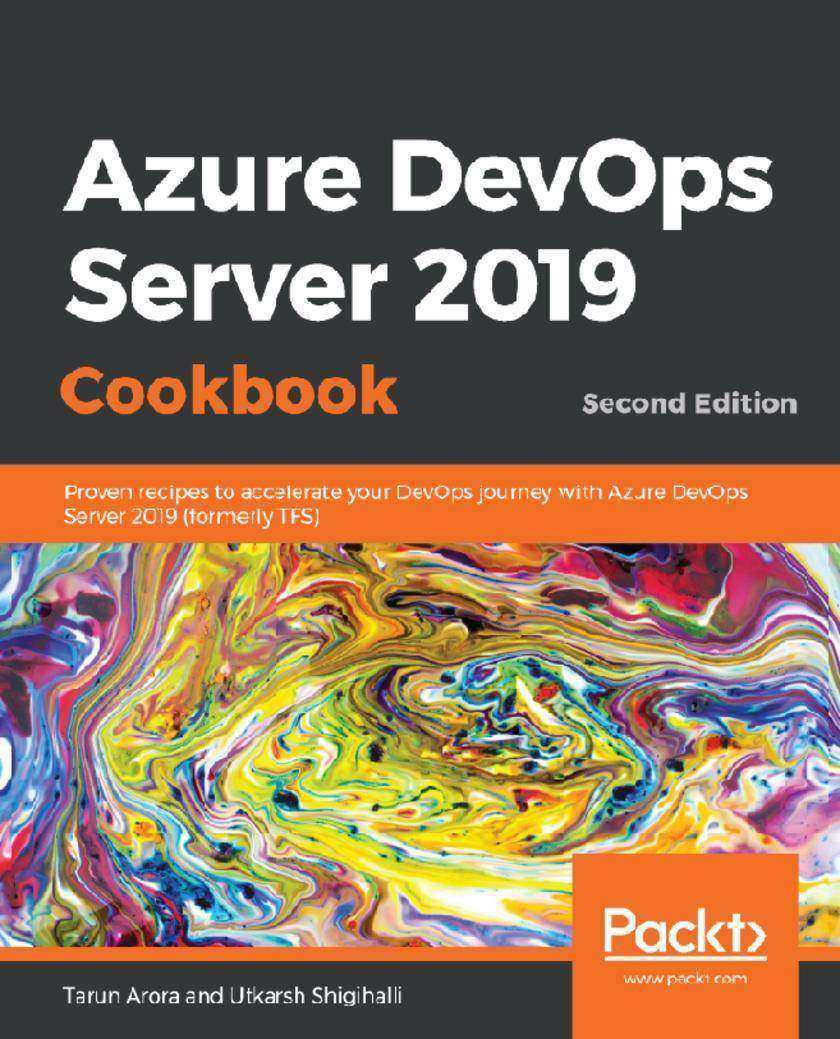
Azure DevOps Server 2019 Cookbook
¥88.28
Over 70 recipes to effectively apply DevOps best practices and implement Agile, Git, CI-CD & Test automation using Azure DevOps Server (TFS) 2019 Key Features * Learn improving code quality using pull requests, branch policies, githooks and git branching design * Accelerate the deployment of high quality software by automating build and releases using CI-CD Pipelines. * Learn tried and tested techniques to automate database deployments, App Service & Function Deployments in Azure. Book Description Azure DevOps Server, previously known as Team Foundation Server (TFS), is a comprehensive on-premise DevOps toolset with a rich ecosystem of open source plugins. This book is your one stop guide to learn how to effectively use all of these Azure DevOps services to go from zero to DevOps. You will start by building high-quality scalable software targeting .NET, .NET core or Node.js applications. You will learn techniques that will help you to set up end-to-end traceability of your code changes from design through to release. Whether you are deploying software on-premise or in the cloud in App Service, Functions, or Azure VMs, this book will help you learn release management techniques to reduce release failures. Next, you will be able to secure application configuration by using Azure KeyVault. You will also learn how to create and release extensions to the Azure DevOps marketplace and reach million developer ecosystem for feedback. The working extension samples will allow you to iterate changes in your extensions easily and release updates to the marketplace quickly. By the end of this book, techniques provided in the book will help you break down the invisible silos between your software development teams. This will transform you from being a good software development team to an elite modern cross functional software development team. What you will learn * Set up a team project for an Agile delivery team, importing requirements from Excel * Plan,track, and monitor progress using self updating boards, Sprint and Kanban boards * Unlock the features of Git by using branch policies, Git pull requests, forks, and Git hooks * Build and release .NET core, SQL and Node.js applications using Azure Pipeline * Automate testing by integrating Microsoft and open source testing frameworks * Extend Azure DevOps Server to a million developer ecosystem Who this book is for This book is for anyone looking to succeed with DevOps. The techniques in this book apply to all roles of the software development lifecycle including developers, testers, architects, configuration analysts, site reliability engineers and release managers. If you are a new user you’ll learn how to get started; if you are an experienced user you’ll learn how to launch your project into a modern and mature DevOps enabled software development team.
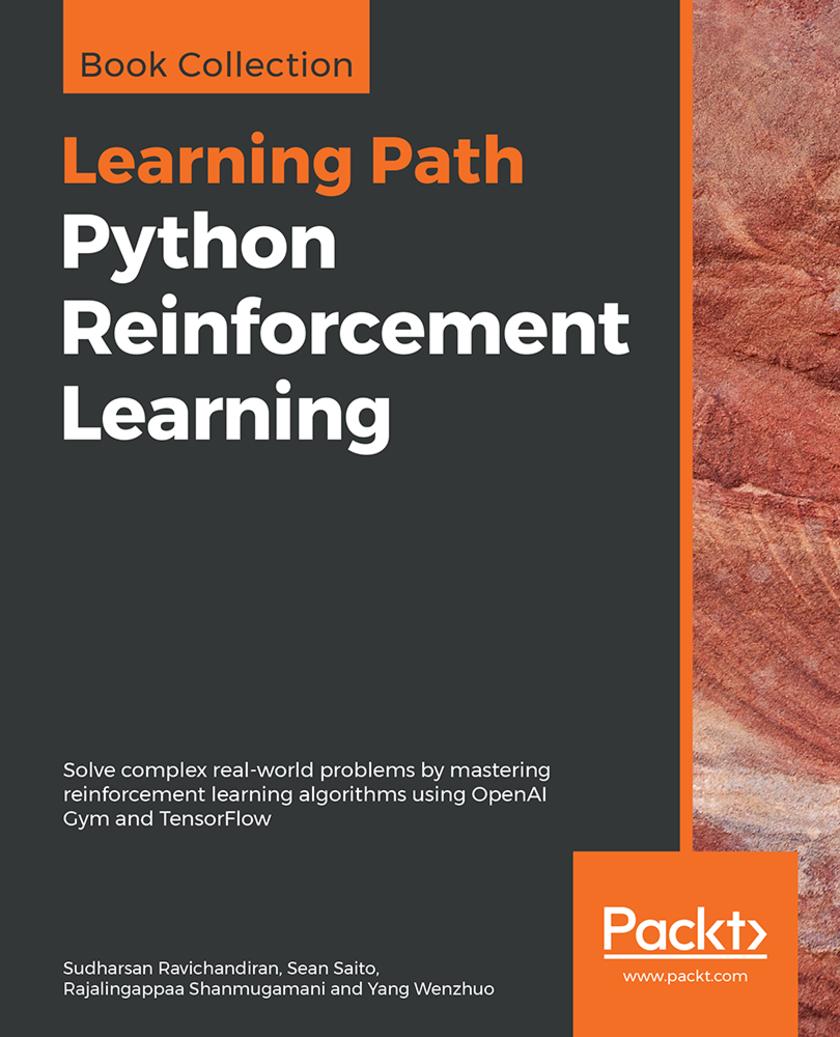
Python Reinforcement Learning
¥88.28
Apply modern reinforcement learning and deep reinforcement learning methods using Python and its powerful libraries Key Features * Your entry point into the world of artificial intelligence using the power of Python * An example-rich guide to master various RL and DRL algorithms * Explore the power of modern Python libraries to gain confidence in building self-trained applications Book Description Reinforcement Learning (RL) is the trending and most promising branch of artificial intelligence. This Learning Path will help you master not only the basic reinforcement learning algorithms but also the advanced deep reinforcement learning algorithms. The Learning Path starts with an introduction to RL followed by OpenAI Gym, and TensorFlow. You will then explore various RL algorithms, such as Markov Decision Process, Monte Carlo methods, and dynamic programming, including value and policy iteration. You'll also work on various datasets including image, text, and video. This example-rich guide will introduce you to deep RL algorithms, such as Dueling DQN, DRQN, A3C, PPO, and TRPO. You will gain experience in several domains, including gaming, image processing, and physical simulations. You'll explore TensorFlow and OpenAI Gym to implement algorithms that also predict stock prices, generate natural language, and even build other neural networks. You will also learn about imagination-augmented agents, learning from human preference, DQfD, HER, and many of the recent advancements in RL. By the end of the Learning Path, you will have all the knowledge and experience needed to implement RL and deep RL in your projects, and you enter the world of artificial intelligence to solve various real-life problems. This Learning Path includes content from the following Packt products: * Hands-On Reinforcement Learning with Python by Sudharsan Ravichandiran * Python Reinforcement Learning Projects by Sean Saito, Yang Wenzhuo, and Rajalingappaa Shanmugamani What you will learn * Train an agent to walk using OpenAI Gym and TensorFlow * Solve multi-armed-bandit problems using various algorithms * Build intelligent agents using the DRQN algorithm to play the Doom game * Teach your agent to play Connect4 using AlphaGo Zero * Defeat Atari arcade games using the value iteration method * Discover how to deal with discrete and continuous action spaces in various environments Who this book is for If you’re an ML/DL enthusiast interested in AI and want to explore RL and deep RL from scratch, this Learning Path is for you. Prior knowledge of linear algebra is expected.
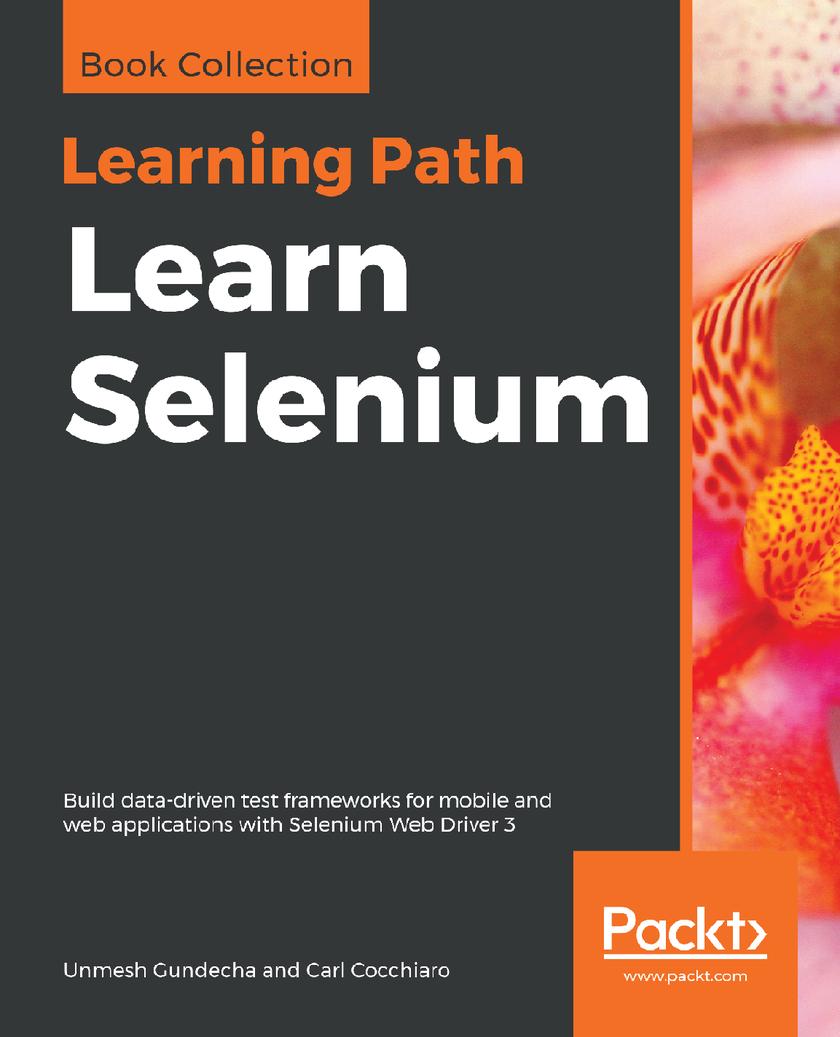
Learn Selenium
¥88.28
Learn end-to-end automation testing techniques for web and mobile browsers using Selenium WebDriver, AppiumDriver, Java, and TestNG Key Features * Explore the Selenium grid architecture and build your own grid for browser and mobile devices * Use ExtentReports for processing results and SauceLabs for cloud-based test services * Unlock the full potential of Selenium to test your web applications. Book Description Selenium WebDriver 3.x is an open source API for testing both browser and mobile applications. With the help of this book, you can build a solid foundation and can easily perform end-to-end testing on web and mobile browsers.You'll begin by being introduced to the Selenium Page Object Model for software development. You'll architect your own framework with a scalable driver class, Java utility classes, and support for third-party tools and plugins. You'll design and build a Selenium grid from scratch to enable the framework to scale and support different browsers, mobile devices, and platforms.You'll strategize and handle a rich web UI using the advanced WebDriver API and learn techniques to handle real-time challenges in WebDriver. You'll perform different types of testing, such as cross-browser testing, load testing, and mobile testing. Finally, you will also be introduced to data-driven testing, using TestNG to create your own automation framework.By the end of this Learning Path, you'll be able to design your own automation testing framework and perform data-driven testing with Selenium WebDriver. This Learning Path includes content from the following Packt products: * Selenium WebDriver 3 Practical Guide - Second Edition by Unmesh Gundecha * Selenium Framework Design in Data-Driven Testing by Carl Cocchiaro What you will learn * Use different mobile and desktop browser platforms with Selenium 3 * Use the Actions API for performing various keyboard and mouse actions * Design the Selenium Driver Class for local, remote, and third-party grid support * Build page object classes with the Selenium Page Object Model * Develop data-driven test classes using the TestNG framework * Encapsulate data using the JSON protocol * Build a Selenium Grid for RemoteWebDriver testing * Build and use utility classes in synchronization, file I/O, reporting and test listener classes Who this book is for This Learning Path is ideal for software quality assurance/testing professionals, software project managers, or software developers interested in using Selenium for testing their applications. Professionals responsible for designing and building enterprise-based testing frameworks will also find this Learning Path useful. Prior programming experience in Java are TestNG is necessary.




 购物车
购物车 个人中心
个人中心



